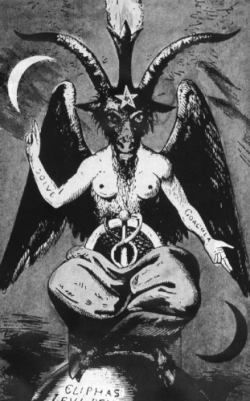Baphomet

Upon first glance, this image seems like the quintessential portrait of the devil. It certainly has demonic symbolism attached to it, but the history of Baphomet and how the name became associated with this image is far more complex than many people realize.
To begin with, the word “Baphomet” is significantly older than this particular symbol. In the early 14th century, the Knights Templar, one of the most powerful and influential organizations of the European Middle Ages, were brought to trial on numerous charges, including fornication, sodomy, blasphemy, and heresy. Although many historians now believe that the charges were largely politically motivated- an attempt to confiscate the organization’s considerable wealth and curb their influence- one of the charges leveled against the Templars was worshiping the idol of a satanic creature called Baphomet. The Templars were eventually arrested, tortured and killed and the organization was disbanded, but the name Baphomet still lingered on.
The popular image of Baphomet as a goat-like creature with breasts and wings did not exist until the 19th century. Eliphas Levi, a French occultist, created the image for his book Dogma and Rituals of High Magic, which was published in the 1850’s. Although he pulled imagery from a number of traditions to create the symbol, and may have intended it to represent something else altogether, Levi’s depiction of Baphomet has become almost ubiquitous in modern culture, primarily as a symbol of Satanism and other subcultures that utilize similar imagery.
© Symbols.com
